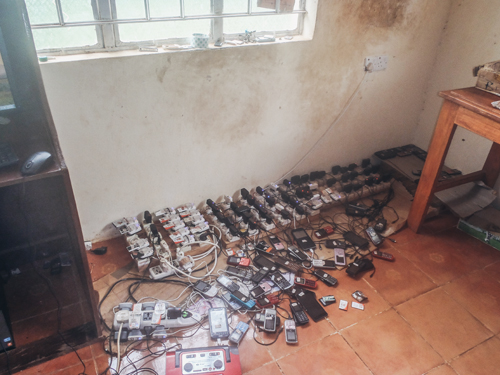Outside Sierra Leone’s bustling capital of Freetown is a small village whose inhabitants enjoy the modern convenience of mobile phones—with one hitch. Users can’t charge them there because the village is minus one important basic: electricity.

“A guy picks up the pile of phones each morning and charges them in a neighboring village that has power,” explains Mohammad Shahidehpour, new National Academy of Engineering member and director of Illinois Tech’s Robert W. Galvin Center for Electricity Innovation, noting that the phones are transported 20 miles round-trip by bicycle.
Shahidehpour is also the Carl and Paul Bodine Endowed Chair in Electrical and Computer Engineering and associate director of the Wanger Institute for Sustainable Energy Research, and is busy adding an informal title to his credentials: global energy ambassador. Following his success as the energy architect of Illinois Tech’s smart microgrid project, Shahidehpour has been traveling to nations such as Ghana, Sierra Leone, the United States Virgin Islands, and others sharing his vision of electricity for all. Images of children in India studying beneath the street lights at night because there is no electricity in their homes or of fresh water being pumped to villages in the African desert propel him forward. He maintains that the answer lies in microgrids powered by renewable-energy sources, such as solar, wind, or water. Shahidehpour knows that he is in this mission for the long haul.
“Our contribution thus far is that we were able to convince the governments of several countries to consider appropriating some money to energy projects,” he says.
As important, Shahidehpour offers his expertise and fundraising capability to encourage project development in these countries. One project, a photovoltaic solar array/energy storage unit at the University of the Virgin Islands, is now underway. The project, a partnership between UVI, the Galvin Center, and the Chicago-based energy-solutions company Veriown, is expected to supply about half of the university’s energy needs and is the first step toward developing a campus microgrid. Project analysts predict that the solar plant alone will save UVI about $1 million annually. Energy costs in the U.S. Virgin Islands are, on average, four times higher than in the continental United States.
“The Galvin Center and the work of Dr. Shahidehpour and his team were instrumental in securing the largest USDA grant to fund a project of this kind in the Caribbean,” says Steve Johanns, chief executive officer of Veriown, noting that the U.S. Department of Agriculture awarded $3 million to the project. “I can’t say enough good things about the innovation leadership that Dr. Shahidehpour and the Illinois Institute of Technology represent in this area of advanced microgrids.”
Last November, Shahidehpour joined other visionary energy leaders from around the world at The Energy Times event “Empowering Customers & Cities,” held in Chicago. He spoke to more than 200 decision makers from utility companies and academia as well as solutions providers, customers, and government leaders such as Mayor Rahm Emanuel. A highlight of his presentation was Illinois Tech’s Mies Campus smart microgrid, which saves the university about $1 million a year and reduces the time and money lost to power outages while meeting Illinois Tech’s growing energy needs.
Shahidehpour is currently working with ComEd and Argonne National Laboratory on the design of a next-generation community microgrid controller. When completed it will connect the university’s microgrid to a utility-owned microgrid for enhancing the reliability, efficiency, resilience, and economics of distributed electric-power systems.
More Online
“Empowering the Global Poor”: www.theenergytimes.com/microgrid/empowering-global-poor
Robert W. Galvin Center for Electricity Innovation: www.iitmicrogrid.net
Veriown: